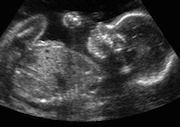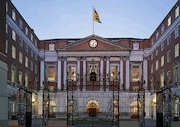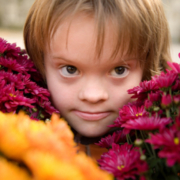Abortion statistics raise profound questions about our priorities and attitudes as a society
The Department of Health published the 2010 abortion figures for England and Wales yesterday. There were 189,574 terminations in England and Wales during 2010. This was 0.3 per cent more than the previous year but 8 per cent more than the 175,542 recorded in 2000. In 1969, the first full year after legalisation, there were 4,990.
The abortion rate is now 17.5 per 1,000 women aged between 15 to 44. More 19 and 20 year-olds underwent the procedure than women of any other age (33 abortions per 1,000 women) and there were 1,042 abortions among girls not yet 15.
The proportion of women ending their pregnancies through the use of a pill has risen from 12 per cent in 2000 to a record 43 per cent last year. So-called ‘medical abortions’ are only available at the start of pregnancy and the proportion of terminations taking place under 10 weeks gestation has accordingly risen from 58 per cent in 2000 to 77 per cent last year.
Figures also show that more women are having repeat abortions. In 2010, 34 per cent of women ending pregnancies had had at least one previous abortion, up from 30 per cent a decade ago. In total, 85 women have ended seven or more pregnancies.
The total number of abortions in Britain since the Abortion Act was passed in 1967 is now well over seven million. There is now one abortion for every four live births in Britain and one out of every three women by the age of 45 will have had an abortion.
What I always find astounding whenever these annual figures come out is the fact that they have ceased to shock us. The numbers are simply staggering and yet those in the Department of Health and Abortion Industry always seem to find something in them to seize upon in order to argue that the situation is somehow improving, that the government’s strategy is working or that they indicate some sort of new dawn.
However what is very clear is that the government’s teenage pregnancy strategy, built around values-free sex education, condoms and morning after pills is clearly not working in bringing rates of unplanned pregnancy down. Instead abortion is being used purely as another form of contraception. And yet it is not contraception. Whilst contraceptives work in the main by preventing fertilisation taking place, abortion stops a beating heart and ends a human life.
The figures quoted above are those that you will read in much of the media coverage and show a situation out of control.
But if you take the time to dig more deeply into the report there are some other very interesting trends that emerge and raise fresh questions for society to confront.
In 2010 there were 147 cases where doctors ended pregnancies beyond the 24th week. Virtually all of these were carried on grounds that there was a ‘significant risk’ of ‘serious abnormality’ in the baby – in other words these babies were in the main severely disabled.
Abortion was made legal up until birth (40 weeks) for disabled babies through the Human Fertilisation and Embryology Act in 1990. 24 weeks is considered by most to be the threshold of viability – the age at which babies can survive in a neonatal unit with good care. Most of these 147 babies, had they been in a neonatal unit rather than in the womb, would have been cared for like any other baby and most would have survived, which is why many argue (and I share this view) that late abortion for disability is morally equivalent to infanticide.
I note also that the total number of babies aborted because they were in some way disabled (most of which were at less than 24 weeks gestation) was 2,290, nearly 10% higher than in 2009. The average for the past 5 years has been under 2000.
That this can occur virtually without comment by the popular press shows how increasingly comfortable we are as a society with the eugenic view that it is appropriate for the weak to be sacrificed so as not to burden the strong, or that the lives of profoundly disabled people are in some sense not worth living. Abortion is after all nothing other than involuntary euthanasia for the very young.
Why is it that we accept involuntary euthanasia for babies in the womb when even the most radical pro-euthanasia groups in Britain do not accept it for those outside? Why is protecting vulnerability apparently not important when we are talking about life before birth? There is after all no one more innocent, more vulnerable, nor killed in greater numbers than the preborn child. Why do we not regard this as one of the most important human rights issues on the planet?
Those unmoved by human rights arguments or the humanity of the unborn child, may nonetheless be concerned about public healthcare costs. 96% of abortions in 2010 were funded from the NHS purse using taxpayers’ money. 59% of the total (up 2% from last year) were contracted to private clinics mainly run by the Britaih Pregnancy Advisory Service (BPAS) and Marie Stopes international (MSI), rather than being provided by the NHS directly.
This compares to approximately 47% public funding of abortions in the years prior to 1990 (see Figure 3: p.8 in the DoH publication). If one excludes non-residents and those not registered with the NHS this means that the government is now funding virtually all abortions in England and Wales. At a time when health budgets are being slashed this must raise serious questions about health spending priorities and the seriousness with which the government is approaching the question of reducing abortion numbers.
Given that approximately one in three women will choose not to have an abortion if given time, space and support to consider alternative options, this must make providing counselling independent of the abortion industry conveyor belt (as called for by two MPs recently in an amendment to the Health and Social Care Bill) an important priority on economic grounds alone.
But maybe the most significant figure in yesterday’s statistics, is that 99.96% of ground C only terminations (representing 185,291 of all abortions) were performed because of risk to the woman’s mental health. This is, I believe, the first time such a statement has been printed as usually ground C terminations do not distinguish between the mental or physical health of the woman.
This statistic is particularly poignant because the Royal College of Psychiatrists is currently carrying out a consultation into the link between abortion and mental health problems and has concluded both their draft statement, and in an earlier 2008 statement, that there does not appear to be any hard medical evidence that the continuation of an unwanted pregnancy constitutes any greater danger to a woman’s mental health than having an abortion. In fact the very opposite may be true.
This means that the overwhelming vast majority of abortions in this country may, technically speaking, actually be illegal under the 1967 Abortion Act. In other words when a doctor authorises an abortion on grounds that it poses less risk to a woman’s mental health than continuing with the pregnancy he is in fact making a claim which is based on ideology rather than evidence, and which would probably not stand up to scrutiny in a court of law.
The fact that no doctor has ever been challenged on this in court betrays the key issue behind this whole debate – that we have decided as a society that abortion is not really wrong.











Leave a Reply
Want to join the discussion?Feel free to contribute!